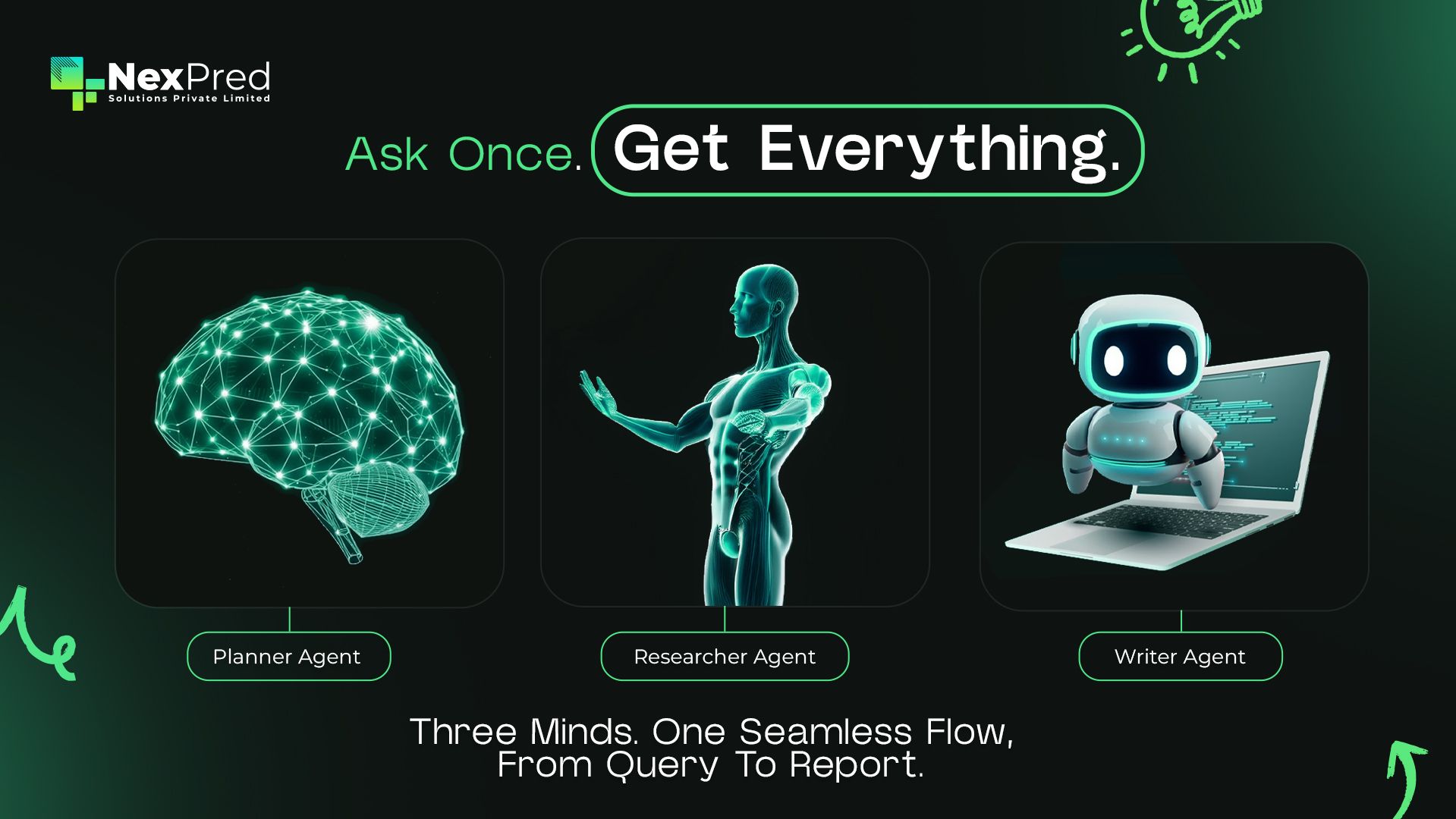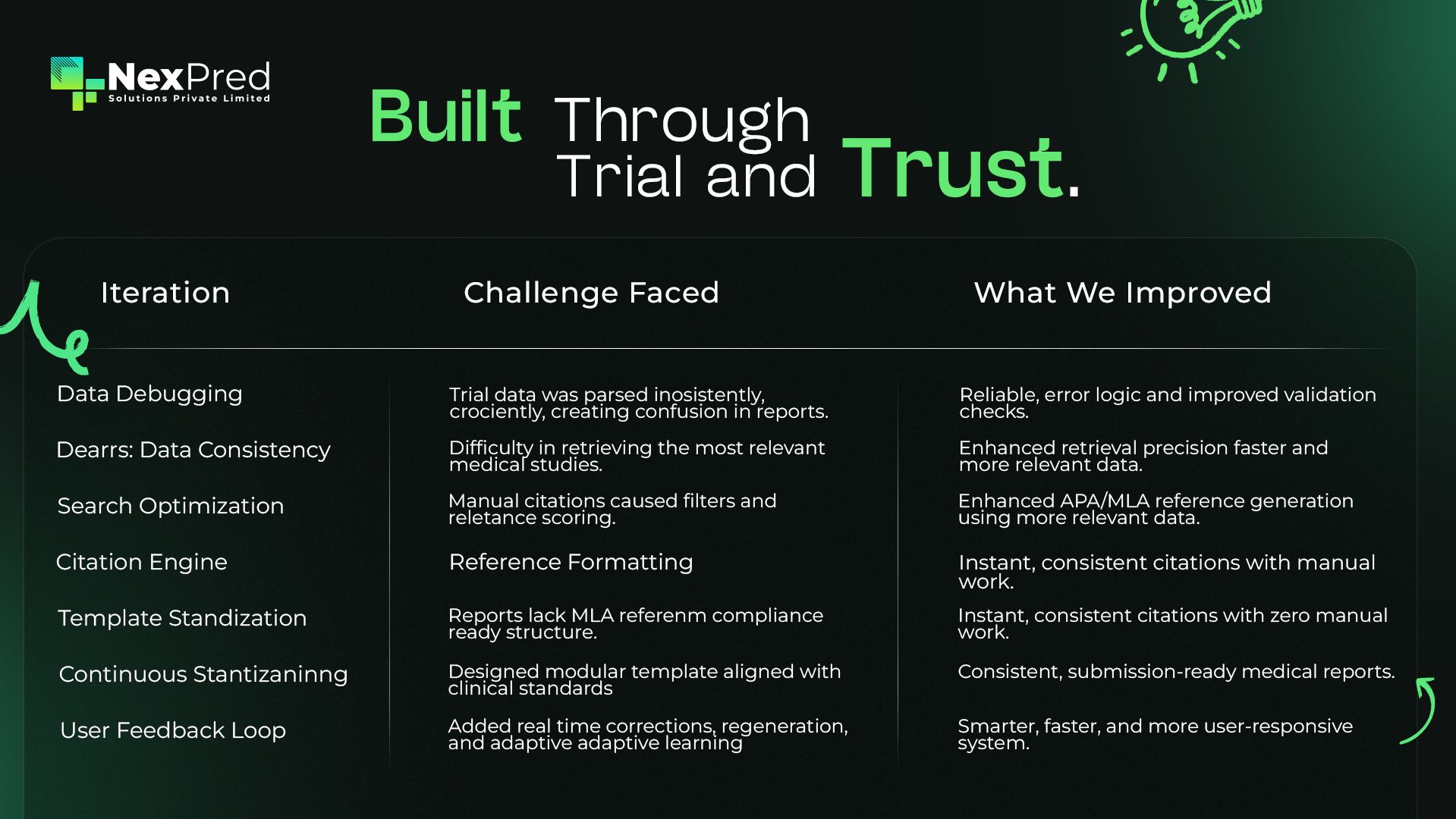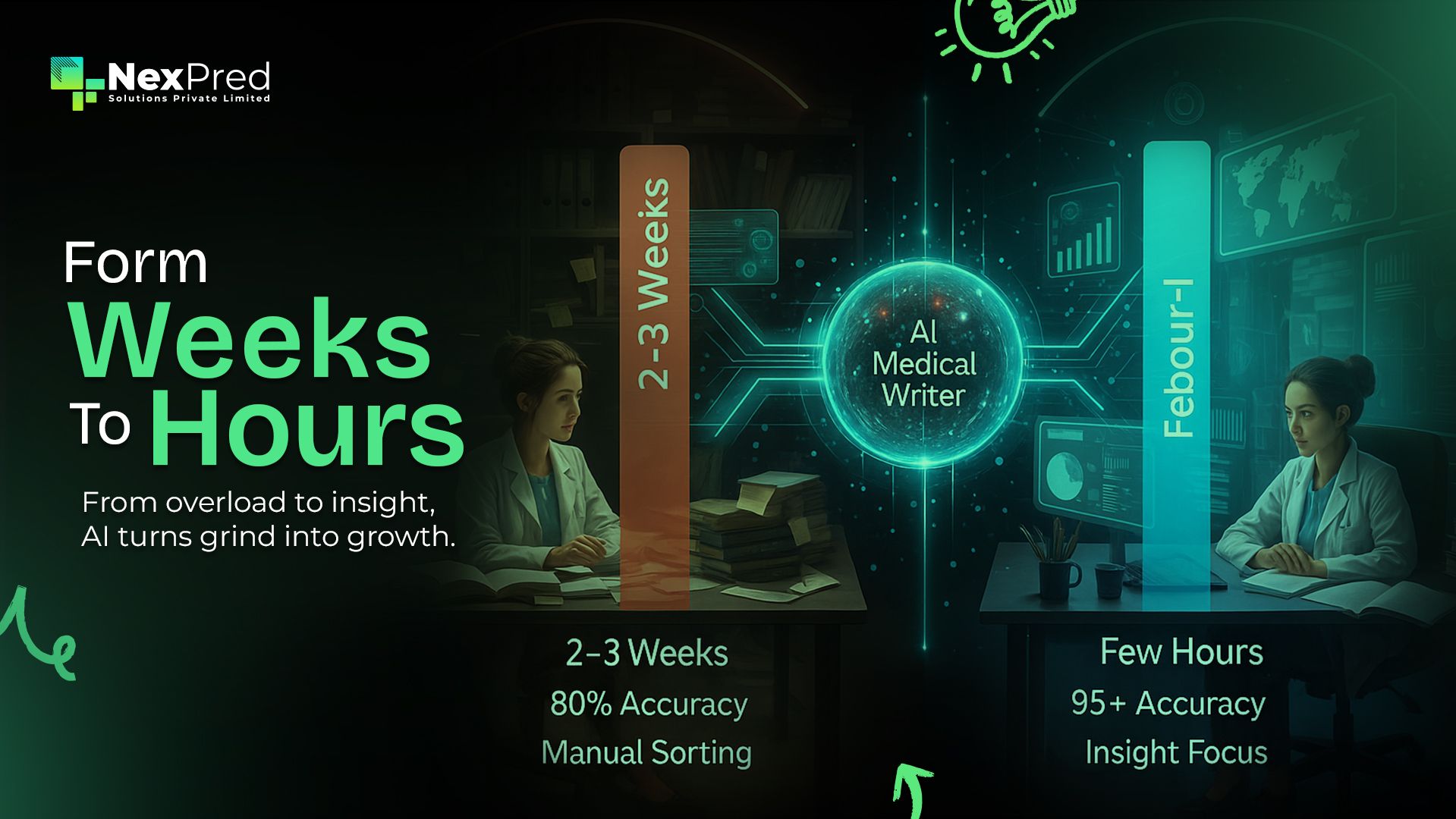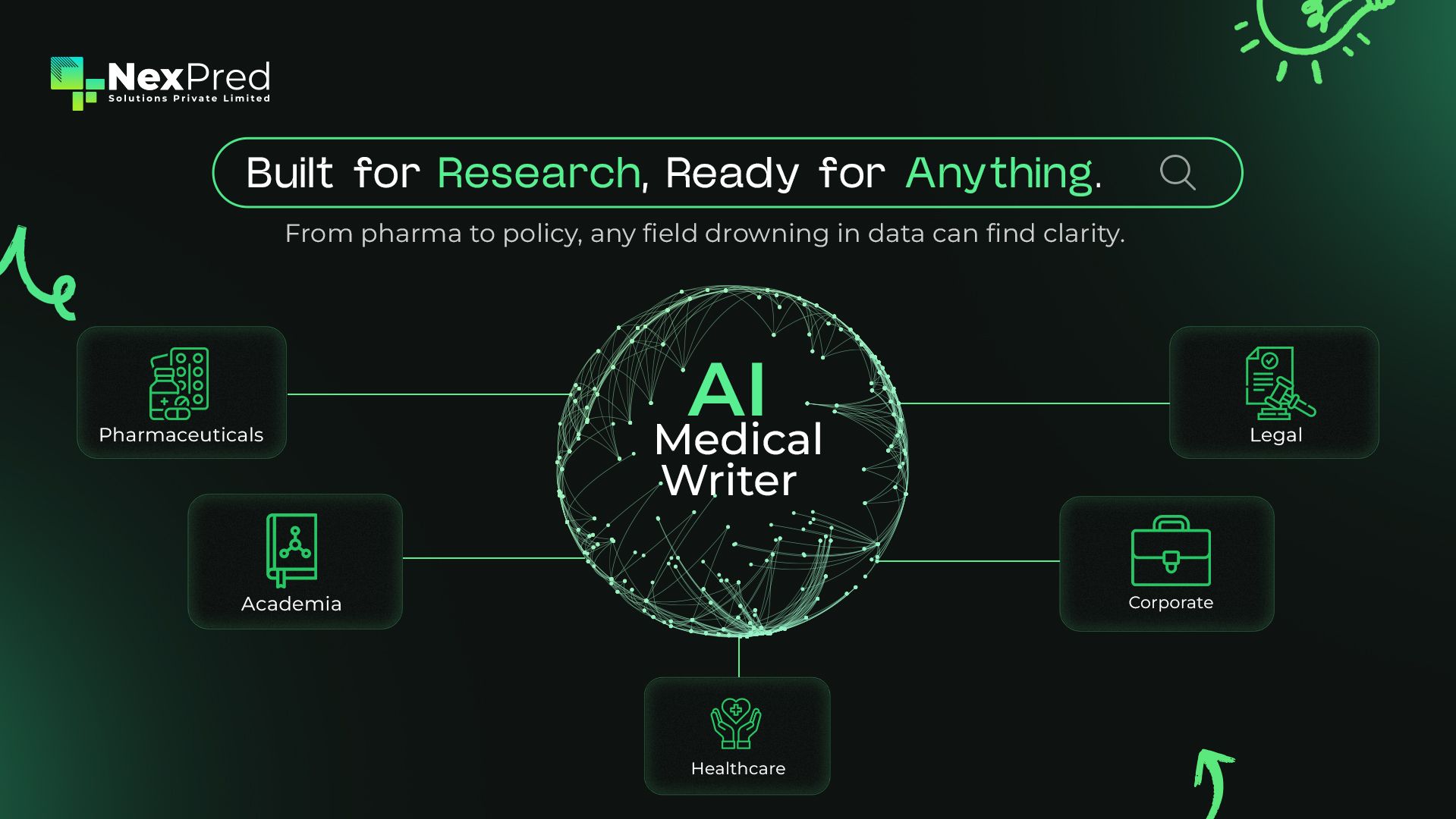
How We Built AI Medical Writer: Turning Complex Clinical Data into Smarter Medical Reports
Clinical research is one of the most data-heavy and detail-sensitive fields in the world. Writing clinical trial protocols requires accuracy, compliance with strict standards (like M11), and hours of going through endless documents, guidelines, and research papers.
That’s where our journey with AI Medical Writer began. We wanted to help researchers cut down time spent on repetitive writing tasks and let them focus on the real work: advancing healthcare.
The Hidden Headache Behind Every Clinical Trial:
Clinical trial protocols are not just lengthy; they’re structurally rigid and must comply with international standards. Each section must follow strict templates, cite peer-reviewed references, and meet regulatory criteria. Researchers spend 2–3 weeks crafting and validating a single draft due to manual research, data verification, and formatting.
Why M11 Makes It So Demanding
The ICH M11 Clinical Electronic Structured Harmonized Protocol (CeSHarP) guideline standardizes how trial protocols are written globally.
It defines every element, from objectives and endpoints to study design, population, and references, with structured formatting and data rules.
While it ensures clarity and consistency, it also introduces massive complexity.
Researchers must:
- Verify every clinical claim using validated medical evidence.
- Format each section according to the M11 schema and structure.
- Cross-link content with the Investigator Brochure (IB), ethical guidelines, and prior studies.
This process requires deep expertise, precision, and countless review cycles, turning protocol drafting into a multi-week task.
We asked ourselves: Could AI take care of the heavy lifting while keeping researchers in control?
Meet the AI That Writes Like a Scientist:
We built AI Medical Writer, a system designed to:
- Plan report structures automatically.
- Research trusted sources like PubMed and medical literature.
- Write M11-compliant sections with proper citations.
In short, it turns a trial design summary and a simple query into a polished, guideline-ready draft.
Curious to see how it works in real time? Watch our demo of AI Medical Writer:

From Question to Report: The AI Workflow
The system runs like a three-step relay race:
- Planner Agent: Reads the query and trial data, then creates a structured outline with sections and subsections.
- Researcher Agent: Builds smart search queries, pulls studies from PubMed and web sources, and stores them in a database for quick access.
- Writer Agent: Uses the research, combines it with trial details, and generates a draft that’s structured, referenced, and ready for review.
Throughout this process, the Investigator Brochure (IB) acts as the anchor document, shaping how the AI interprets trial data, guiding tone and context, and ensuring the report aligns with the official study design and medical background.
How It Works in Action
Let’s say a researcher wants to draft the “Study Population and Eligibility Criteria” section for a new oncology trial.
- The Planner Agent scans the trial summary and IB, creating a structured layout with M11-compliant headings (Inclusion, Exclusion, and Rationale).
- The researcher agent searches PubMed for related studies using key terms like “Stage II breast cancer inclusion criteria” and extracts validated clinical standards.
- The Writer Agent then merges this research with the trial’s parameters, generating a detailed, reference-backed draft that already aligns with M11 formatting.
Result: A section that previously took 3–4 days to write and verify can now be completed in under an hour, with traceable citations.
This flow means researchers no longer start from scratch. Instead, they receive a well-organized draft backed by real evidence.
Technical Overview: The Intelligence Behind It
At its core, AI Medical Writer uses an agentic architecture powered by:
- LLMs such as GPT-4 for natural language reasoning and drafting.
- LangChain for orchestrating multi-agent communication.
- SQLite + Vector Databases (FAISS) for storing and retrieving PubMed references.
- Flask Framework for backend operations and real-time user interaction.
This combination ensures reliable, traceable, and context-aware writing performance tailored for clinical documentation.
Behind the Scenes: Iterations and Improvements
Building AI Medical Writer wasn’t a straight line. Each sprint added new stability, from improving the agent’s ability to interpret medical language to refining how references were fetched and formatted.

We also faced domain-specific challenges, such as
- Ensuring citation accuracy across thousands of PubMed entries
- Keeping every generated section M11-compliant
- Managing changing or incomplete trial data
- Balancing automation with researcher oversight
These hurdles shaped how the system learned to handle complexity without losing accuracy.

What Changed: From Weeks of Work to Hours
With AI Medical Writer, researchers can:
- Save hours of manual formatting and searching.
- Generate guideline-compliant drafts with trusted references.
- Focus more on insights instead of paperwork.
Before, researchers spent 2–3 weeks crafting and validating a single protocol draft due to manual research, version tracking, and compliance checks.
Now, with automation handling the groundwork, drafts are produced in a few hours, ready for expert refinement.
The Road Ahead: Smarter, Faster, More Reliable
We’re not stopping here. Our next goals include:
- Adding specialized research agents for unseen protocols.
- Expanding the database to support more templates and document types.
- Enhancing document processing for PDFs and other formats.
- Giving researchers more control with dropdowns and checkboxes for tailored outputs.

Why This Matters for the Future of Research:
Clinical research is about precision, and AI can support that precision without cutting corners. With AI Medical Writer, we’re proving that AI doesn’t replace researchers; it empowers them.
This project showed us that even the most complex tasks, like writing M11-compliant trial protocols, can be made simpler, faster, and smarter when humans and AI work hand in hand.
